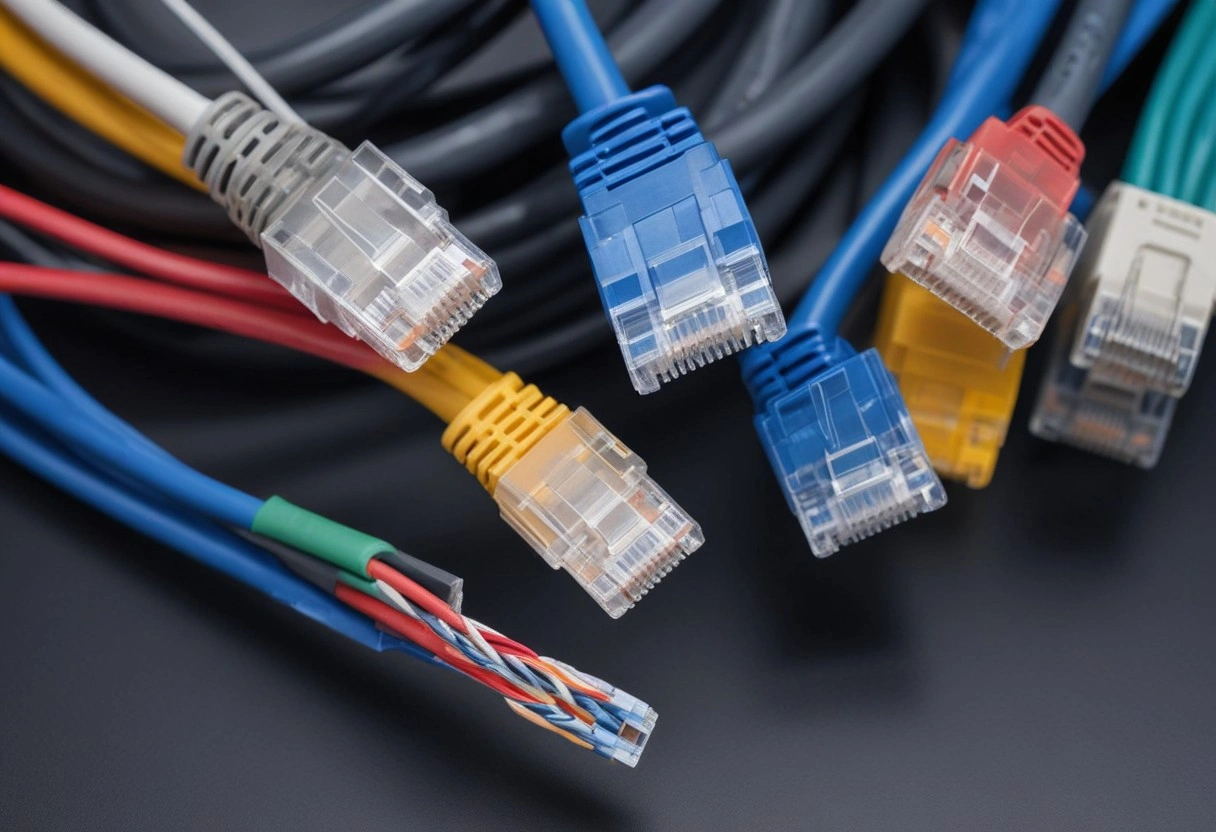Advantages of Using Fiber Optic Cabling for a Network
Fiber optic cabling has become increasingly popular for both commercial and residential networks due to its numerous advantages
Created by: Daniel Ogunsemowo /
Vetted by:
Otse Amorighoye

Fiber cable has become increasingly popular for both commercial and residential networks due to its security, durability, and capacity for high bandwidth, offering numerous advantages over traditional copper cabling. Here’s a detailed look at the benefits of using fiber optic cabling: Fiber optic cables provide significantly higher bandwidth compared to copper cables. Fiber cabling can support extremely high data rates, making them ideal for applications that require rapid data transmission. This high bandwidth is essential for streaming high-definition video, online gaming, and large data transfers. Fiber optic cables can transmit data over much longer distances without significant loss of signal quality. Unlike copper wire, which is susceptible to signal degradation over long distances, fiber optic cables maintain high performance. This is particularly important for long-distance telecommunications and large-scale data networks where signal degradation over distance is a critical factor. Unlike copper cables, fiber cables are inherently secure and immune to electromagnetic interference (EMI) and radio frequency interference (RFI). This makes them ideal for environments with high electrical noise, ensuring reliable and consistent data transmission. Fiber optic cables offer better security compared to copper cables because they are difficult to tap without being detected. This makes fiber optic cable a preferred choice for applications where data security is paramount. Fiber optic cables experience very low attenuation, meaning the signal loss over long distances is minimal. In contrast, copper cable has higher attenuation, leading to greater signal loss over similar distances. This allows for the use of fewer repeaters and amplifiers, reducing overall infrastructure costs and complexity. Fiber optic cables are much lighter and thinner than copper cables, making them easier to install and handle. Unlike the bulkiness and weight of copper wires, fiber optic cables offer a more efficient solution. This can reduce installation time and costs, especially in spaces where weight and space are significant concerns. As demand for higher data rates continues to grow, fiber optic cables are well-suited to meet future needs. Their high bandwidth capacity ensures that they can handle the increasing data loads, making them a future-proof solution for networking. For related information, see Future-Proofing Your Infrastructure: Fiber optic cables offer lower latency compared to copper cables, which is crucial for applications that require real-time data transmission, such as video conferencing, online gaming, and financial trading. Fiber optic networks are highly scalable, allowing for easy upgrades and expansion. As business needs grow, additional fibers can be added without disrupting the existing network, providing a cost-effective path for future expansion. Fiber optic cables are more resistant to environmental factors such as temperature fluctuations, moisture, and harsh weather conditions. This makes them more reliable and durable, reducing maintenance costs and downtime. Optical fiber transmits data using light, which requires less power than electrical signals in copper cables. This results in lower power consumption and operational costs, contributing to a more energy-efficient network. Fiber optic cabling offers a multitude of advantages, making it an excellent choice for modern networks that demand high speed, long-distance transmission, security, and reliability. As technology evolves and the need for faster and more secure data transmission grows, fiber optic cables are poised to become the backbone of global communication networks, ensuring robust and scalable connectivity for the future. For more insights, explore: Fiber optic cables offer higher bandwidth, longer distance transmission, immunity to electromagnetic interference, enhanced security, low attenuation and signal loss, lightweight and thin design, future-proof technology, lower latency, scalability, reliability, and lower power consumption compared to copper cables. Fiber optic cables are difficult to tap without being detected, making them a more secure option for data transmission. This is because intercepting the light signals requires physical access to the cable, which is easier to detect than tapping into electrical signals in copper cables. Fiber optic cabling is considered future-proof because it has a high bandwidth capacity that can handle the increasing data loads as technology evolves. This makes it suitable for future networking needs and ensures it can support new applications and higher data rates.The Benefits of Using Fiber Optic Cabling
High Speed and Bandwidth
Long Distance Transmission
Immunity to Electromagnetic Interference
Enhanced Security
Low Attenuation and Signal Loss
Lightweight and Thin
Future-Proof Technology
Lower Latency
Scalability
Reliability and Durability
Low Power Consumption
Conclusion
FAQs
What are the main advantages of fiber optic cabling over copper cabling?
How does fiber optic cabling provide enhanced security?
Why is fiber optic cabling considered future-proof?